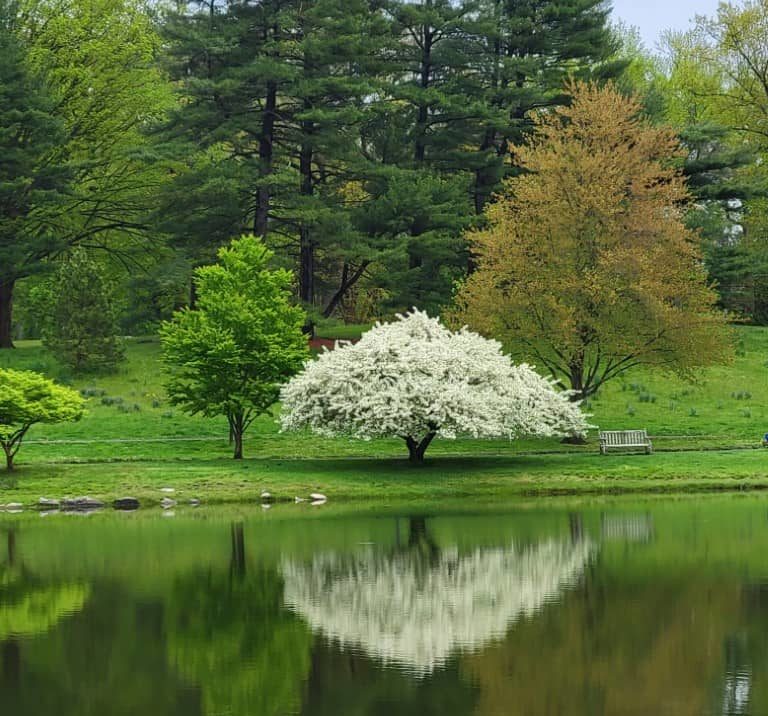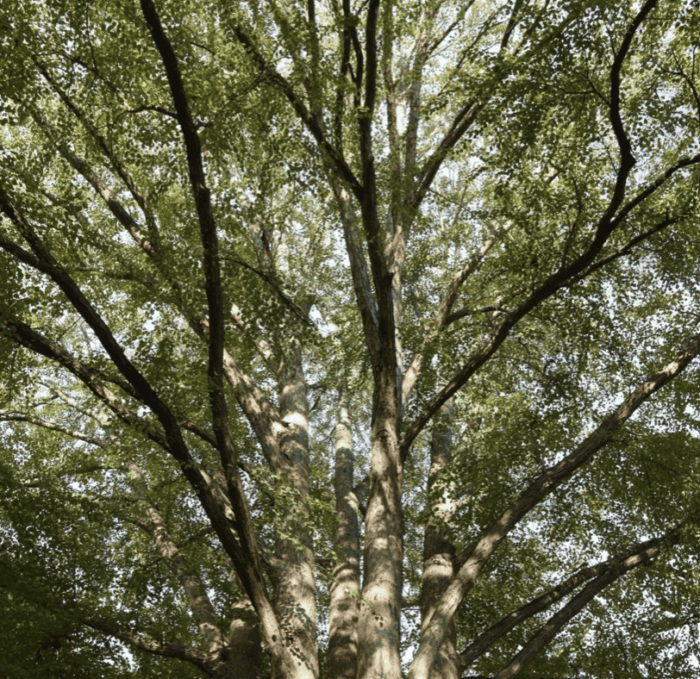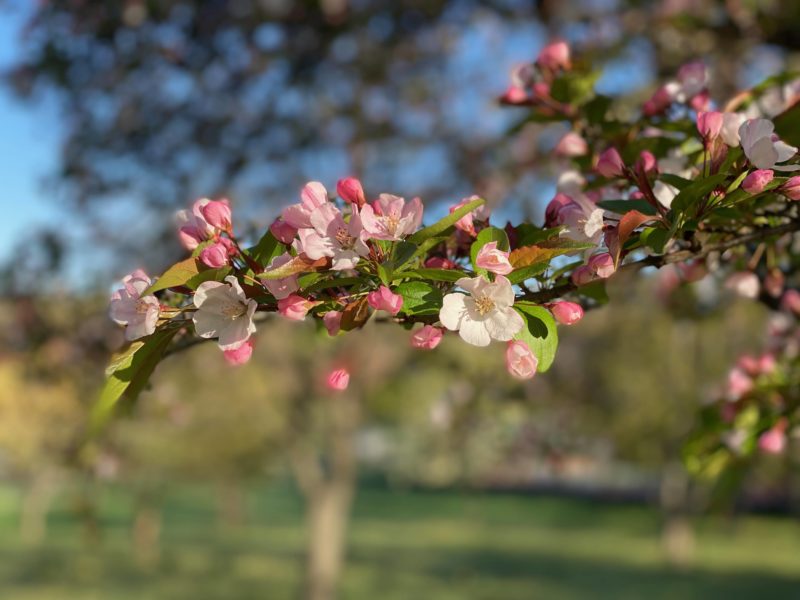
By Urling Searle
Spring is a wonderful time to celebrate our mature trees. The air becomes measurably cleaner as they spread out their leaves to photosynthesize carbon dioxide and a host of fresh scents and vivid shades of green bring a sense of renewal and rebirth. Their tender buds and new seedlings provide much needed food to wildlife as winter melts away. It is worth taking a moment to pause and appreciate the often overlooked vital benefits our trees provide, as what they offer our community is silently and continuously made available year after year.
In Spring, when rainstorms come our way their thirst for fresh water helps mitigate stormwater runoff while helping rainwater sink deeper into the ground replenishing the aquifers that allow our streams to run on hot summer days.
Our water systems are intricately connected to our trees. When trees along a stream or body of water are lost, a resulting rise in water temperature can cause an increase in bacterial growth and a depletion of oxygen. This condition can be seen in increasing toxic algae blooms. What is less obvious is the resulting loss of life that threatens our birds and other resident species all the way up the food chain.
Insects are often thought of as annoying and there are a few that can be dangerous but most all insects live quietly without our awareness of their important function providing essential food and pollination for a healthy local ecosystem. The ecosystem that keeps our water and air clean and safe for our families.
The lifespan of canopy trees varies significantly but most take decades to reach the mature high functioning state where they may remain for centuries, perhaps experiencing a century or more of limited decline and regrowth before succumbing to a pathogen or old age. A mature native oak can support hundreds of species for centuries. Is this not worthy of our care and careful consideration?
Should you see an ivy vine climbing up a tree on your property take a few minutes to cut it just above the ground and four feet higher as it will weaken and may kill that tree. Keep sprinklers away from trees in cool wet weather and water them in times of severe drought. When you come upon the dreaded Spotted Lantern Fly crush it immediately. Every 3 to 5 years seek out a respected arborist for suggestions on how to responsibly care for, not just cut down, your trees. Fear is too often used as a tool for removal, with the resulting loss being understood when it is too late.
Spring is also a wonderful time to plant new trees in your landscape that will become part of tomorrow’s mature canopy. Plant mainly natives in areas where you don’t expect yourself or future owners to build or pave over. You will be giving yourself and your town a gift to be enjoyed for generations to come.
As Greenwich continues to develop, the value of its mature trees continues to rise. A stand of mature trees on one property benefits surrounding properties and even whole neighborhoods. Upstream trees protect downstream properties from runoff. Protected open space woodlands offer neighborhoods and the entire community protection by helping to keep our air and water clean. Our warming climate brings changing weather patterns and new pests and diseases that present new challenges to our trees.
If we value and take some time to care for our mature trees, we will continue to reap the benefits they offer to us each spring. The Greenwich Tree Conservancy is a resource available to all. For more information please visit: https://greenwichtreeconservancy.com







